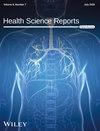Tele-Medical Nutrition Therapy to Promote Healthy Eating and Nutrition Adherence of Chronic Patients in the COVID-19 Pandemic: A Pragmatically Before-After Trial
Abstract
Background and Aims
Patients find it difficult, during the pandemic, to receive appropriate nutrition services because of the limited access to health services. This study assessed the effectiveness of a tele-consulting nutrition intervention on the nutrition adherence of patients with diabetes and hypertension.
Methods
A tele-medical nutrition therapy (MNT) intervention was conducted as a one-group before-after trial. The estimated sample size was 314. Of these, 183 patients were selected from Hefdah-e-Shahrivar and 131 from Farabi Hospital. Patients were asked to complete an adapted version of the nutrition adherence self-reported instrument to compare nutrition adherence when they received face-to-face therapy versus tele MNT.
Results
In total, 166 completed all phases of the study. The results showed that the nutrition adherence score significantly increased compared to before the intervention. Hedges's g effect size also confirmed the high efficacy of telenutrition therapy. The magnitude of differences was within a high range (effect size 3.76 [CI: 3.40–4.12]).
Conclusions
The present findings showed that providing teleconsulting nutrition services to diabetic and hypertensive patients can positively affect their nutrition adherence. Telenutrition to promote a healthy diet can contribute to effectively controlling diseases in chronic patients during/after the pandemic with no gaps or failures.
Trial Registration
This study was a tele-nutrition intervention. In this study, we provided consultation on regular food consumption and did not order any chemical substances or nutritional supplements. Furthermore, we did not perform any treatment or invasive intervention, we assumed that a registration number was unnecessary, so we did not apply for clinical trial registration.


 求助内容:
求助内容: 应助结果提醒方式:
应助结果提醒方式:


